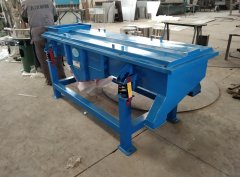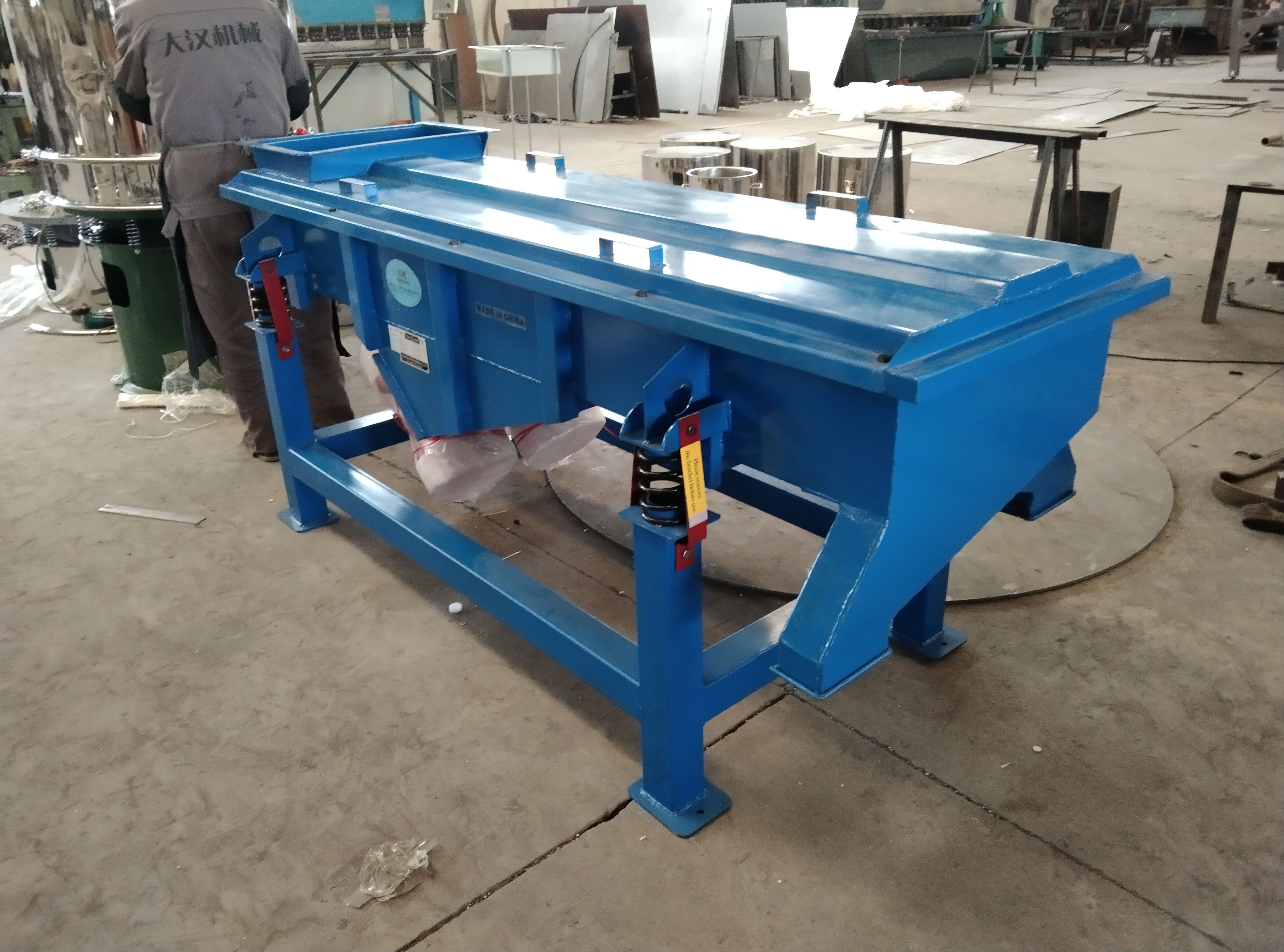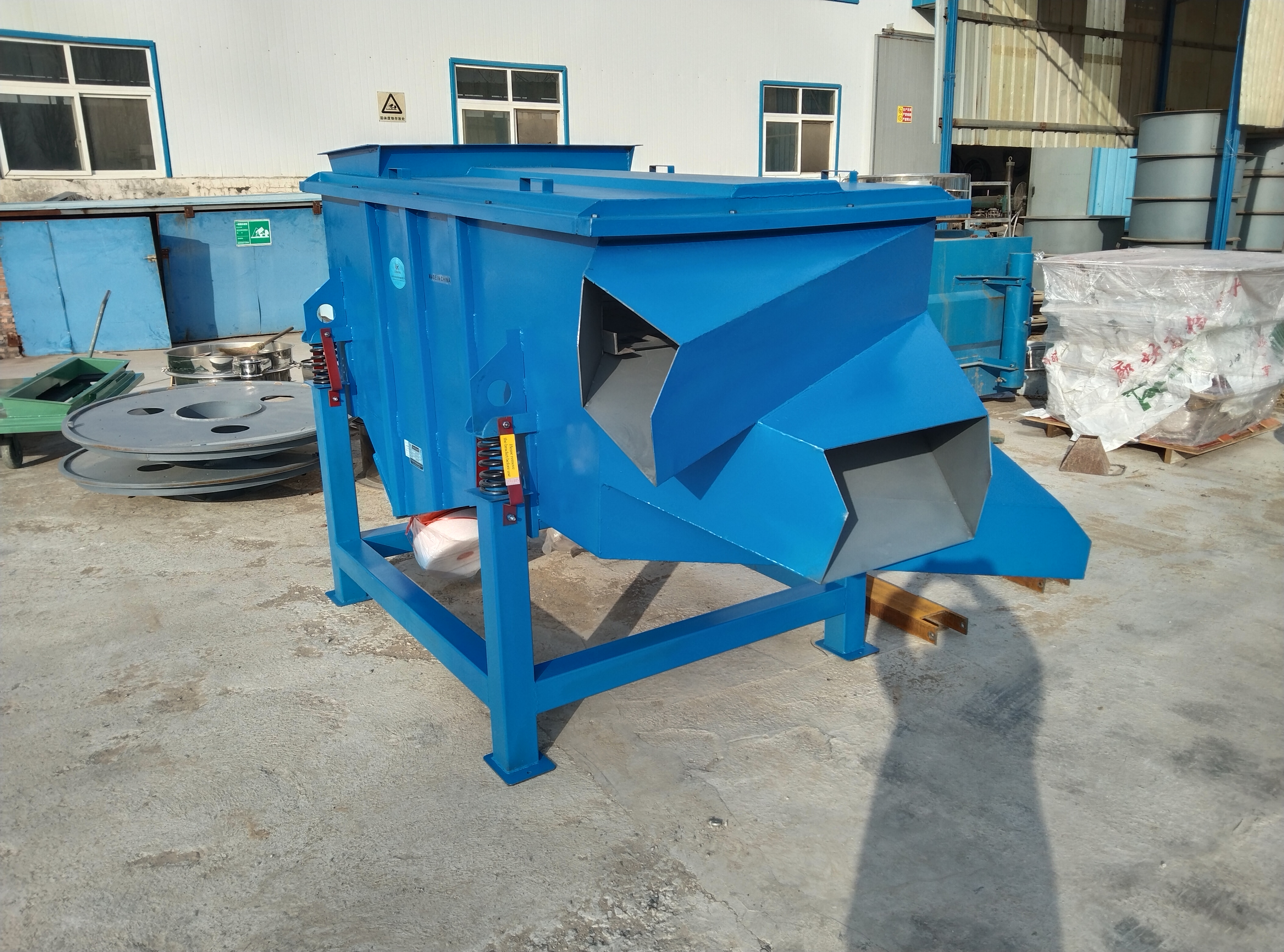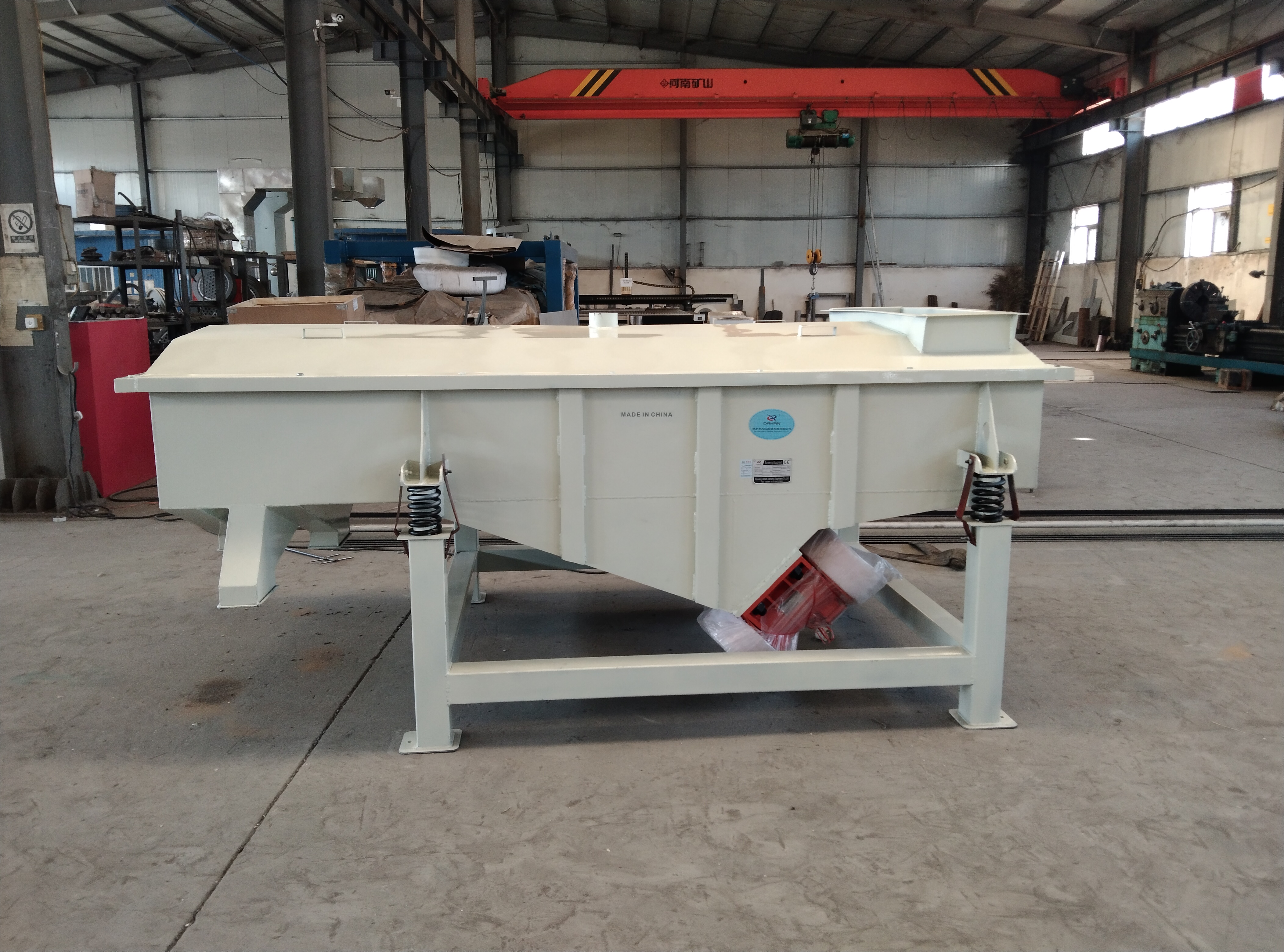
Vibrating screening machine for sand drives the screen surface to move through mechanical vibration, and uses the physical property differences of the material particles to complete the classification operation. It is suitable for processing the full range of particle sizes from coarse aggregate to fine sand. Typical sand and gravel materials have a wide range of particle size distribution, ranging from 0.074mm fine sand to gravel over 200mm. The bulk density of sand and gravel materials is usually between 1450-1700kg/m³. Its loose characteristics make it easy to produce secondary crushing during the screening process. In terms of hardness index, the Mohs hardness of quartz sand and gravel can reach level 7, requiring the screening equipment to have a wear-resistant structure. Common screen materials must be made of stainless steel wire or polyurethane composite materials.

Working principle of Vibrating screening machine for sand
The Vibrating screening machine for sand achieves material classification through mechanical vibration. Its core principle is based on vibration energy conversion and material dynamic characteristics. Taking the linear vibrating screen as an example, the equipment adopts a dual vibration motor reverse synchronous rotation structure, and the motor axis is installed at a certain angle to the screen surface. When the motor is running, the centrifugal force generated by the eccentric block is superimposed in the vertical direction to form a linear exciting force along the screen surface. This design makes the screen body produce periodic throwing motion, and the material presents a jumping forward trajectory on the screen surface.
Throwing effect: The exciting force causes the material particles to break away from the screen surface, forming a throwing height of 0.5-2 times the amplitude, effectively breaking the material agglomeration;
Stratification: Materials of different particle sizes form a density gradient in the vertical direction, fine particles sink to the bottom layer, and coarse particles float on the surface;
Screening mechanism: When the material moves above the screen hole, particles smaller than the screen hole size complete the screening under the combined action of gravity and vibration inertia force.
Taking the processing of granite crushed materials as an example, when the screen surface inclination is set to 10° and the vibration intensity K=4.5, the material transportation speed can reach 0.4m/s and the screening efficiency can reach more than 85%. For wet sand with a moisture content of 5%, the screen hole can be effectively prevented from being blocked by adjusting the vibration frequency to 1500rpm.
Vibrating screening machine for sand price
Economic equipment (processing capacity <50t/h)
Price range: 8,000-15,000 yuan/unit
Typical configuration: single-layer screen, ordinary carbon steel screen box, fixed amplitude
Applicable scenarios: small mixing station, laboratory sample preparation
Standard equipment (processing capacity 50-200t/h)
Price range: 20,000-50,000 yuan/unit
Typical configuration: double-layer screen, Q345B steel plate welded screen box, variable frequency speed regulation
Applicable scenarios: aggregate grading of commercial mixing station, machine-made sand production
Heavy equipment (processing capacity >200t/h)
Price range: 80,000-150,000 yuan/unit
Typical configuration: three or more layers of screen, polyurethane composite screen, intelligent monitoring system
Applicable scenarios: large-scale mine screening, construction waste resource utilization

Vibrating screening machine for sand usage
Building aggregate preparation system: In the 800 ton/h aggregate production line, a three-stage screening system is configured
Pre-screening: Use bar feed screen to separate oversized stones above 50mm; Medium crushing screening: Use double-layer linear screen to separate 20-40mm fine aggregates; Finished product screening: Use three-layer vibrating screen to produce 0-5mm machine-made sand, 5-10mm small stones, and 10-20mm medium stones. This system can achieve continuous graded aggregate production with a grading modulus of 2.8, meeting the construction requirements of C60 concrete.
Machine-made sand purification process: For granite sand production line, a high-frequency vibrating screen and powder selection machine combination process is used
The screen surface is equipped with a 0.6mm square hole screen with an opening rate of 65%; the vibration frequency is 1800rpm, generating a 0.3G acceleration field; with the airflow classification system, stone powder below 75μm can be removed, so that the MB value of the finished sand is controlled within 1.0.

Tailings comprehensive utilization project: Probabilistic screening technology is applied in the treatment of iron ore tailings
A four-layer screen structure (5mm/2mm/0.5mm/0.074mm) is adopted; the adjustable material speed of 0.8-1.2m/s is achieved through frequency conversion speed regulation; the content of -0.074mm particle size in the screened material reaches 68%, which can be used as cement admixture.
Dry-mixed mortar production line: annual production capacity of 400,000 tons production line configuration
The premix silo is connected to a double-layer linear screen; the upper 3mm screen removes fiber impurities; the lower 0.6mm screen controls the particle size distribution; with the online moisture meter, the consistency fluctuation of the finished mortar is ≤±5mm.
The actual application of vibrating screening machine for sand needs to be guided by process requirements, and the equipment selection and parameter setting should be combined with material characteristics. At the operation and maintenance level, a regular inspection system needs to be established, focusing on screen wear, vibration stability and the tightness of connectors to ensure that the equipment continues to meet process requirements. For sand and gravel processing systems of different sizes, it is necessary to comprehensively evaluate factors such as processing capacity, classification accuracy, and equipment footprint to select a matching vibrating screen model and configuration plan.